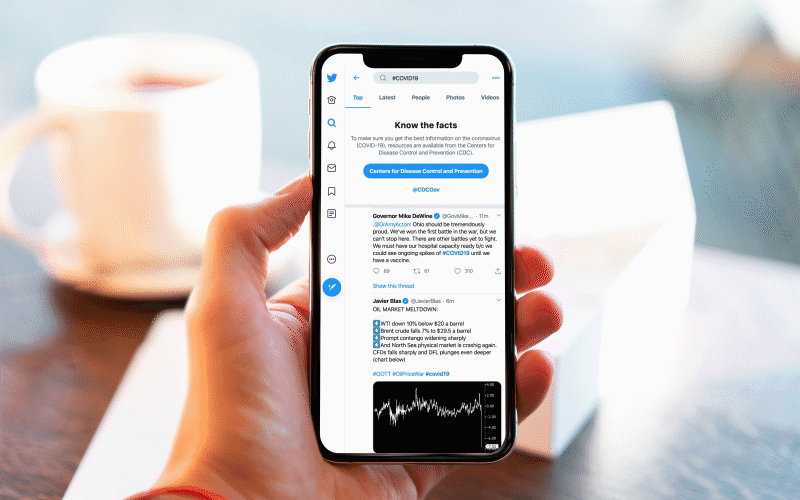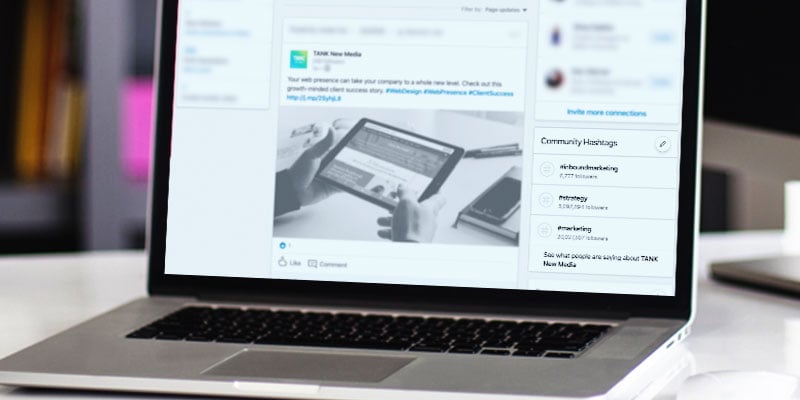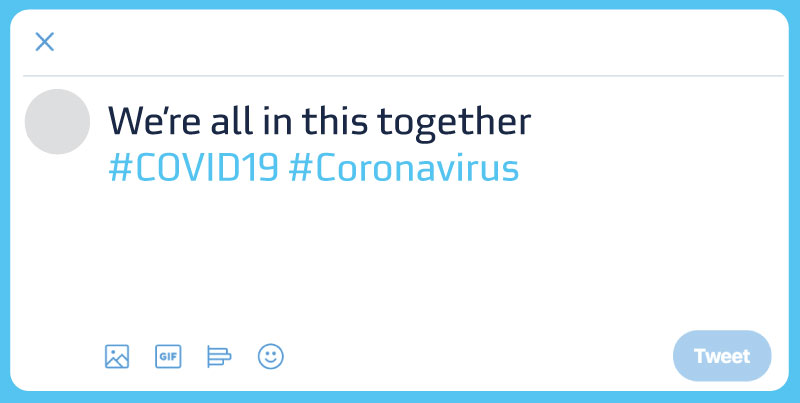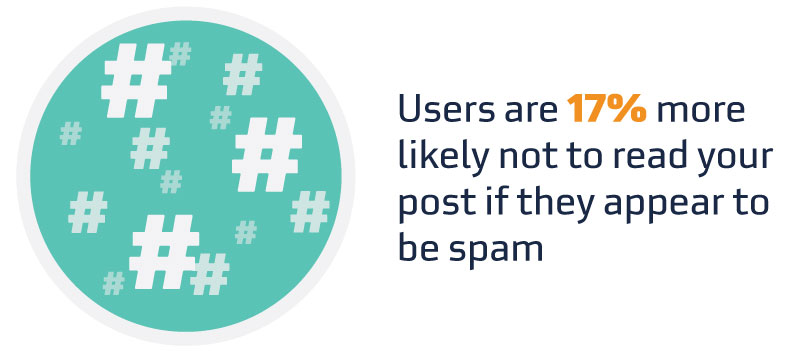A hashtag is a word or phrase that identifies messages on a specific topic — and connects users all around the world.
Let’s start with: what is a hashtag? In 2014, the term hashtag was officially added to the dictionary and defined as “a word or phrase preceded by the symbol # that classifies or categorizes the accompanying text.” Although originating with Twitter, hashtags are now used across most social platforms to help categorize posts and make them easily searchable.
Hashtags are intended to link conversations of users throughout the world. By simply adding the pound sign (#) followed by the word you wish to tag, your post is automatically added to the stream of posts containing that tag. Creating connected conversations for people across the world. For example, right now trending hashtags include #Coronavirus, #COVID19, and #AloneTogether.

Businesses can utilize these hashtags to help reach a specific audience across any industry. However, as with any business tactic, there are best practices to get the most out of your efforts.
1. Understand How Each Platform Utilizes Hashtags
One of the most important things to understand about hashtags is that every platform uses them differently. To utilize hashtags most successfully, you have to alter the hashtag plan for the appropriate platform.
For example, Facebook uses hashtags to tie conversations together and rank those posts based on timeliness. Because of how posts are listed on this platform, it is recommended to use only one or two hashtags.
Instagram, however, ranks photos with 11+ hashtags higher to support the algorithm with the most # interaction. This platform also streams posts together into a single conversation allowing users to connect on a similar topic.
Twitter is where hashtags originated and became popular, so tweets with one to two hashtags have double the engagement than those without them. Twitter ties conversations together by the use of their hashtags to allow users to engage directly in a stream.
LinkedIn is a popular social networking space for businesses and has recently added hashtag capabilities to its platform. Users can search for posts with specific hashtags and recommend similar posts with related hashtags. LinkedIn also added featured hashtags on business pages allowing companies to highlight and share particular hashtags.
Each social platform uses hashtags differently, so understanding each can be the difference between a slam dunk social media campaign and a dead-end one. Learn more about using hashtags on each social media platform.

2. Use Hashtags that Compliment Your Social Post
Whether creating a custom hashtag for your post or using a live one, for a hashtag to be successful, it needs to compliment your social post. Using hashtags that are trending but irrelevant to your post is distracting and frustrating for your audience.
When creating your own hashtag, make it memorable, valuable, and unique. The tag should also be searchable and add value to the post. According to studies, posts with hashtags receive 2x more engagement than those without hashtags. Hashtags can help your post be found and tracked — who doesn't want that?
Using hashtags occasionally will not provide the maximum impact for your brand. To get the most out of hashtags, it's important to create branded hashtags that can be used across posts and platforms, and that help followers find and connect with your brand.
Hashtagging is not a direct science. It's ok to test tags to find which works with your audience, but try to remain as consistent as possible.
3. Join Relevant Conversations
Hashtags are intended to connect online conversations and make them easier to find and follow. Following hashtags on social media allows users to stay up-to-date with what's going on in the world. People want to feel connected and be "in the know," and hashtags enable them to be a part of larger conversations.
It's important to do your research on trending hashtags and throughout your industry specifically. For example, right now, amidst the coronavirus pandemic, #Coronavirus, #COVID19, and #AloneTogether are some of the most popular hashtags in the world. Companies that use these pre-existing hashtags appropriately and relevantly are gaining broader exposure.

Joining conversations that are already happening can tie your company to relevant topics, but do not add unrelated hashtags to your posts. In the same vein, joining conversations simply because they are trending is not effective — topics and tags need to be relevant to your business.
4. Track Special Promotions or Similar Posts Using the Same Hashtag
Similar to using hashtags for specific holidays (#EarthDay) or events (#Oscars), you can use them to track a promotion or campaign. To use and monitor hashtags, simply create a hashtag for your campaign and use it in all your posts that mention the promotion. This is also a great way to jump-start user-generated content: it encourages viewers to engage with your brand by adding that same hashtag to their post.
To monitor hashtag activity, look directly on the platform by searching for the hashtag and keeping an eye on its performance. However, if you are using a scheduling tool, like HubSpot or Hootsuite, there are simpler ways to monitor and engage with users through those platforms. For instance, creating a "stream" in HubSpot allows you to view the number of times the hashtag has been used, by what users, and how they're using it. Learn more about social monitoring here.
5. Keep Hashtags Branded & Consistent
Successful hashtags in social media marketing are industry-specific and act as community connections. Brand hashtags are meant to promote consistency and prioritize posts. Tying content together using hashtags is very successful for brands.
Branded hashtags are also useful for extending your audience reach using influencers or community. Utilizing brand keywords and popular search words associated with your company is a great place to start locating hashtags.
6. Don't Do These Things with Hashtags
Do not include spaces or special characters in your hashtags. Platforms only recognize what is connected directly to the # symbol. This excludes using all special characters like !, $, %, ^, &, *, and +.
Don't go overboard with your hashtags. Too many hashtags actually decrease engagement and interaction rates. Your posts will begin to look spammy — users are 17% more likely not to read your post if they appear to be spam.

Do not write hashtags using all lowercase words. It creates a better user experience to capitalize the beginning of each word — it's easier to decipher and eliminates awkward misreads. For example, #itstoughtoreadthis but #CapitalizingWords feels natural to users and improves readability. See what we did there?
Using Hashtags for Businesses Can Be Tricky, but Successful
That little # symbol can be tough to get the hang of, but try not to overthink it. The key to good social media marketing is to be active and engaged with users. Hashtags can be a simple and effective way to do that once you understand how to use them most effectively.
So, get out there and join the conversation!
Do you need help incorporating social media in your growth marketing plan? We’re happy to help. Learn more about how to grow your business with digital marketing.
Subscribe to Our Blog
Stay up to date with the latest marketing, sales, and service tips.




